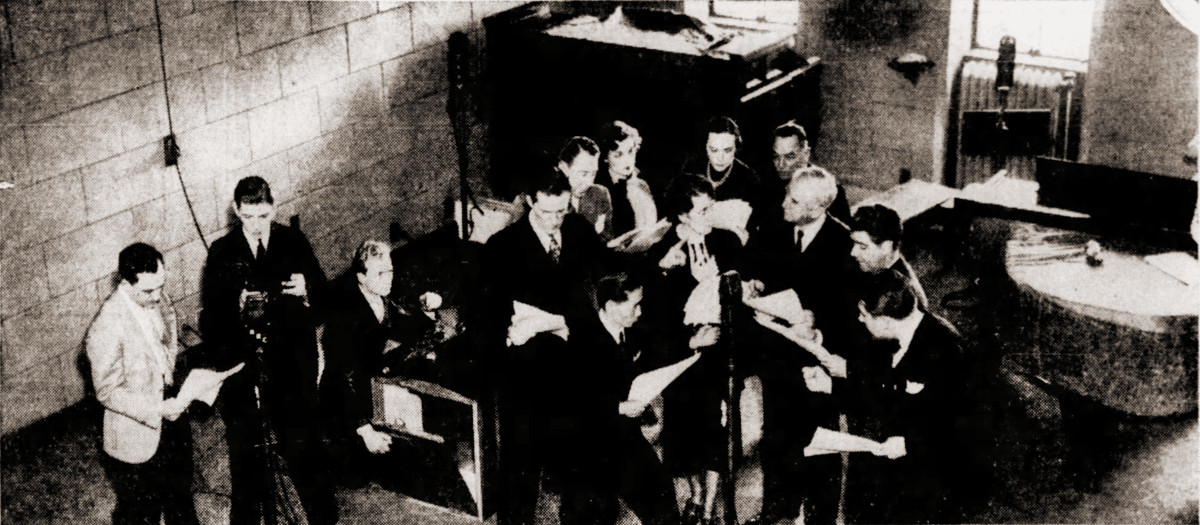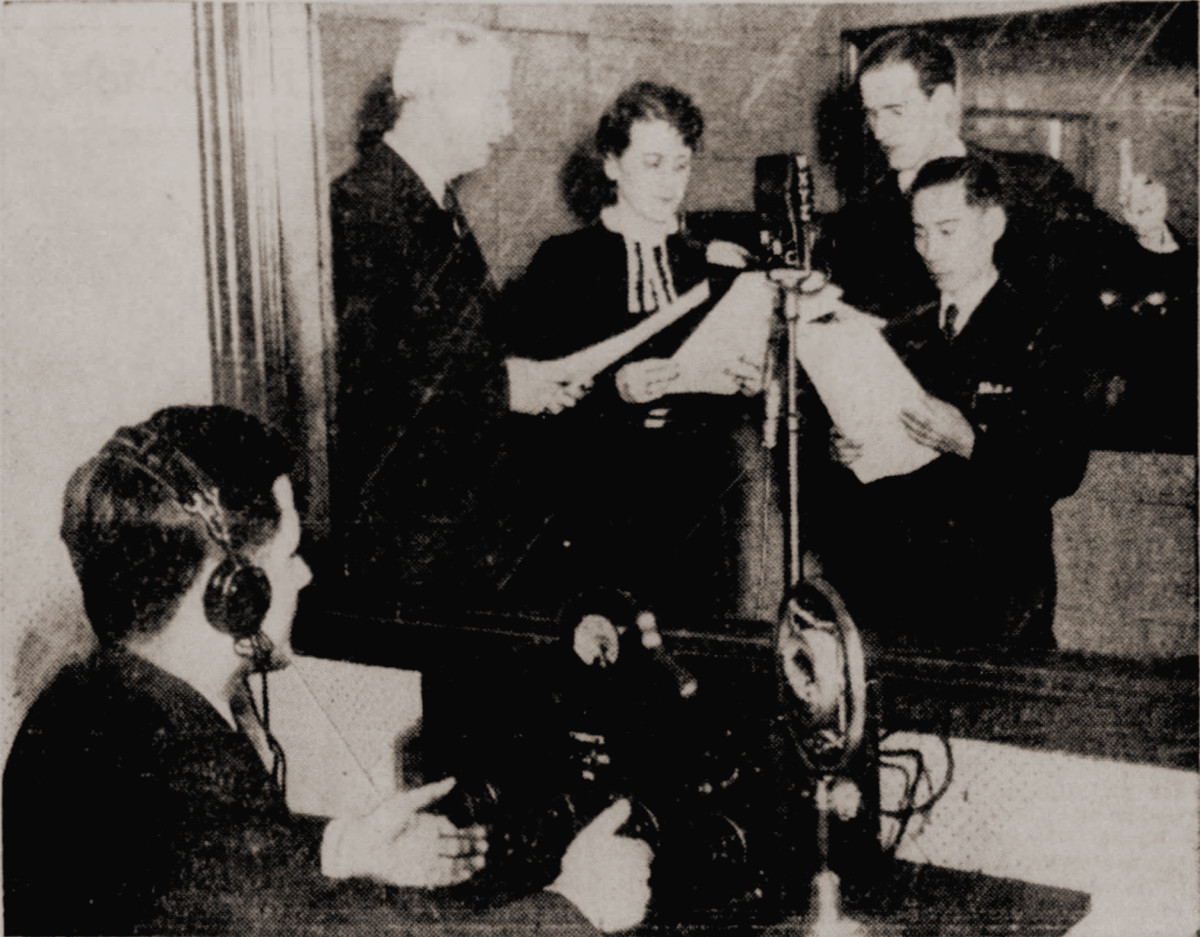Head of WXYZ Responsible for Putting Program on Air
Little Over a Year Old, Show Is Now One of Most Popular of Its Kind in City.

By Edgar A. Guest, Jr.

A little over a year ago. George W. Trendle, president of WXYZ called Felix Holt, his publicity director, into his office. When Holt appeared, Trendle tossed him a honk and told him to read it and submit an opinion. The book was Frank T. Packard’s “Adventures of Jimmie Dale.” the story of a young millionaire who led a most respectable life by day And an adventurous life as the “Gray Seal” by night. The “Gray Seal” was a modern Robin Hood who robbed the rich and gave to the poor, and whenever he cracked a safe or left an opponent prostrate he would paste a gray seal somewhere near. Felix Holt reported back to Trendle that he thought the story was fine. That was all Trendle wanted to know. He put in a call for Fran Striker, a writer, and explained that he wanted to do a radio script based on the Jimmie Dale Idea. That was the birth of “The Green Hornet,” heard at 7:30 p. in. every Tuesday, Thursday and Saturday, and one of the most popular dramatic shows originating out of a Detroit radio station. It is rivaled, perhaps, only by another of Trendle’s brain children, “The Lone Ranger.” The “Hornet,” like the “Gray Seal.” leads a double life; by day he is Britt Reid, young newspaper publisher, but as soon as the sun goes down he dons a green mask. rides around the town in a ‘sleek black car with a super-powered motor” and traps criminals via their own methods. He is “hunted’ by police and criminals alike.” The “Green Hornet” shows are directed by Jaymes Jewell, dramatic director at WXYZ for the last seven years before that a student of the theater under Jessie Ponstelle and Ann Harding. Jewell also directs the “Lone Ranger” series. He doesn’t work in front of microphone any more because of numerous other duties. “Striker hunts through the newspapers for stories suitable for radio presentatior and then whips them into shape for the “Hornet.- He says it takes him in hours of thinking and two hours of typing to prepare a “Green Hornet” script of 28 pages, and because he also writes the “Lone Ranger” shows, he has to sit up all night nearly every night.
Change in Script Made
He submits his script to Jewell and the two make whatever changes they see fit. The cast is called together for a first rehearsal at 4 p. m. the (Day of the show, and they work steadily until 6:30. Then it’s a mad dash to the drug store in the lobby of the Maccabees Building for a sandwich and back to the studio for a “spot” rehearsal, in the course of which the rough spots revealed by the first rehearsal are ironed out. At 7:30 the engineer puts on a recording of the buzz of a hornet and the show goes on the air.
Jewell searched three months for a means of reproducing the hot-net s buzz. Finally he hit on the idea of vibrating a violin string with a high-frequency buzzer and recording it with the tone arm of the receiver resting right on the buzzer. He is mighty proud of that sound effect. for he says it comes closer to the actual sound of a hornet than anything ever devised.
Various Sounds Produced
A “Hornet” broadcast is somewhat of a shambles. Sound effects men surrounded by their mysterious contraptions work at their own microphones in one corner of the studio. The sound of opening and closing, footsteps, shots, telephone noises, breaking glass, waves and practically any sound you can imagine in reproduced by these men.
Gathered around another microphone are the members of the cast, Britt Reid; his bodyguard, Michael Axford; Kat, his valet and partner in crime; Miss Case, his secretary, and other characters in the drama.
Although the show is not witnessed by a studio audience, the actors and actresses frown, smile, grimace and gesture as though they were on stage. They find that it helps to add realism to their performance if they go through the motions required by the script. Of course these motions are limited, for the actors necessarily must stay within range of the mikes.
The engineer listens to the program over headphones and “mixes” or regulates the volume by a dial. His hand never leaves the dial from the time the show goes on the air until it is all over. If he doesn’t know his job, the program reaches you too loud or tee soft, with resultant distortion of the voices.
Actors Move in Silence
The performers are constantly on the move as they appear and disappear from the action, yet you never hear this movement. As each page of the script is read it is dropped to the floor to eliminate the rustle of page-turning.
Al Hodge plays the title role, James H. Irwin, a veteran actor, plays Michael Axford; Raymond Toyo, a Japanese boy, plays Kato, the valet, and Miss Lee Allman is Miss Case, the secretary.
Irwin established the character of Michael Axford in the old “Man Hunter” series when he was the script pal of Warner Lester, played by Director Jewell. He is still Miachael Axford and probably will be long after “The Green Hornet” is forgotten
But for right now “The Green Hornet” is far from forgotten. In fact, it is a rip-snorting adventure program that is finding favor among adults and children alike.
From the Detroit Free Press, Detroit, Michigan · Sunday, February 28, 1937